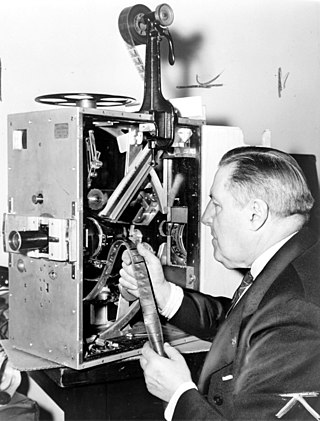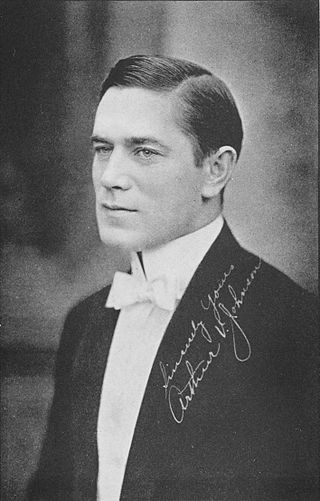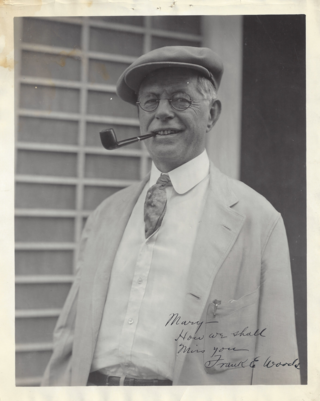
Gottfried Wilhelm Bitzer was an American cinematographer, notable for his close association and pioneering work with D. W. Griffith.

Owen Moore was an Irish-born American actor, appearing in more than 279 movies spanning from 1908 to 1937.

Donald William Crisp was an English film actor as well as an early producer, director and screenwriter. His career lasted from the early silent film era into the 1960s. He won an Academy Award for Best Supporting Actor in 1942 for his performance in How Green Was My Valley.

Florence Turner was an American actress who became known as the "Vitagraph Girl" in early silent films.

Robert G. Vignola was an Italian-American actor, screenwriter, and film director. A former stage actor, he appeared in many motion pictures produced by Kalem Company and later moved to directing, becoming one of the silent screen's most prolific directors. He directed a handful of films in the early years of sound films, but his career essentially ended in the silent era.

Gene Gauntier was an American screenwriter and actress who was one of the pioneers of the motion picture industry. A writer, director, and actress in films from mid 1906 to 1920, she wrote screenplays for 42 films. She performed in 87 films and is credited as the director of The Grandmother (1909).

Henry Lehrman was an American actor, screenwriter, director and producer. Lehrman was a very prominent figure of Hollywood's silent film era, working with such cinematic pioneers as D. W. Griffith and Mack Sennett. He directed, as well as co-starred in, Charlie Chaplin's first film, Making a Living.

Arthur Vaughan Johnson was a pioneer actor and director of the early American silent film era, and uncle of Olympic wrestler and film actor Nat Pendleton.
Carl Wilhelm, was a prolific German film director, film producer and screenwriter of the silent film era, at the end of which his career apparently entirely faded away and he vanished into obscurity.

Carlyle Blackwell was an American silent film actor, director and producer.

William Russell was an American actor, film director, film producer and screenwriter. He appeared in over two hundred silent-era motion pictures between 1910 and 1929, directing five of them in 1916 and producing two through his own production company in 1918 and 1925.

Linda Arvidson was an American stage and film actress. She became one of America's early motion picture stars while working at Biograph Studios in New York, where none of the company's actors, until 1913, were credited on screen. Along with Florence Lawrence, Marion Leonard, and other female performers there, she was often referred to by theatergoers and in trade publications as simply one of the "Biograph girls". Arvidson began working in the new, rapidly expanding film industry after meeting her future husband D. W. Griffith, who impressed her as an innovative screen director. Their marriage was kept secret for reasons of professional discretion.

Edward Dillon was an American actor, director and screenwriter of the silent era.

Stanner E.V. Taylor was an American screenwriter and film director of the silent era. He wrote for more than 100 films between 1908 and 1929.

John T. Dillon was an American actor of the silent era. He appeared in more than 130 films between 1908 and 1936. He died in Los Angeles, California from pneumonia.

Frank E. Woods was an American screenwriter of the silent era. He wrote for 90 films from 1908 to 1925. He first became a writer with the Biograph Company. Woods was also a pioneering film reviewer. As a writer, his contributions to film criticism are discussed in the 2009 documentary, For the Love of Movies: The Story of American Film Criticism. Woods worked for the Kinemacolor Company of America, directing at their Hollywood studios and writing the script for the unreleased The Clansman (1911). He was also known for his screenplay collaborations with D. W. Griffith, including the co-scripting of The Birth of a Nation. He later publicly expressed regret for his involvement with the film. He is interred in the Hollywood Forever Cemetery in Hollywood, CA.

George Nichols, sometimes credited in films as George O. Nicholls, was an American actor and film director. He is perhaps best remembered for his work at Mack Sennett's Keystone Studios.
Emmett C. Hall, born Emmett Campbell Hall was an American screenwriter and silent film actor. He directed around 70 silent films and acted in one silent film.

The Dawson Film Find (DFF) was the accidental discovery in 1978 of 372 film titles preserved in 533 reels of silent-era nitrate films in the Klondike Gold Rush town of Dawson City, Yukon, Canada. The reels had been buried under an abandoned hockey rink in 1929 and included lost films of feature movies and newsreels. A construction excavation inadvertently uncovered the forgotten cache of discarded films, which were unintentionally preserved by the permafrost.
Frank Opperman (1861–1922) was an actor in American silent films. In 1916, he was reported to have had a 29-year career on stage and a 7-year film career. Between 1903 and 1907, Opperman appeared three times on Broadway, in Little Lord Fauntleroy, Cashel Byron, and an adaptation of Uncle Tom's Cabin.

















